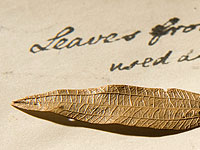
 In 1791, two
convicts, Mary Bryant and her husband, William, made plans to escape the convict
colony at Port Jackson. On the moonless night of 28 March, they stole the
Governor’s cutter. Accompanying them were their two children, Charlotte and
Emanuel, and seven other convicts. After a voyage of nearly 5000 kilometres,
enduring gales, starvation and attacks by Aboriginal people and Torres Strait
Islanders, they reached Coupang in Timor. They were shipped back to England in
irons. William, the two children and three of the remaining convicts did not
survive the voyage. Mary Bryant and the other four convicts reached England and
were committed to Newgate Gaol.
In 1791, two
convicts, Mary Bryant and her husband, William, made plans to escape the convict
colony at Port Jackson. On the moonless night of 28 March, they stole the
Governor’s cutter. Accompanying them were their two children, Charlotte and
Emanuel, and seven other convicts. After a voyage of nearly 5000 kilometres,
enduring gales, starvation and attacks by Aboriginal people and Torres Strait
Islanders, they reached Coupang in Timor. They were shipped back to England in
irons. William, the two children and three of the remaining convicts did not
survive the voyage. Mary Bryant and the other four convicts reached England and
were committed to Newgate Gaol.
Mary’s story attracted the interest of James Boswell, the lawyer and celebrated
biographer of Samuel Johnson, who used his influence to obtain pardons for her
and her companions. These tea leaves were among a store taken by Mary Bryant
when she escaped and are said to have been given by her to James Boswell among
whose papers, held in Yale University Library, they were found. The leaves are
those of wild sarsaparilla (Smilax glyciphylla).
Display item Leaves used as tea
< Previous Exhibit | Back to The Exhibits page | Next Exhibit >